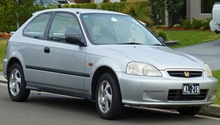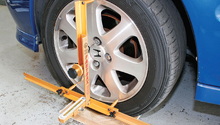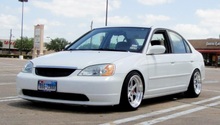Honda: Why Does My Car Pull in One Direction?
Diagnosing why your car pulls to one side may involve checking a dozen or more parts that?-if damaged or faulty-?can cause this problem to occur. Save yourself the time by checking these possible reasons.
This article applies to the Honda Civic/Del Sol (1992-2000), and Accord (1990-2002).
Your car can pull to one side for a number of reasons, which include uneven tire pressure, tire wear, camber, caster, or toe alignment. A car that is not in alignment will pull to one side, and so will a car that has an imbalance in the power steering system or a problem with the brake system. Even the surface of the road or certain driving conditions can cause your car to pull. Also, keep in mind that most cars are designed to pull to the right if you fall asleep at the wheel, so some pull might be normal. If the pull is excessive or occurs only at specific times (like during braking or turning), then you can already rule out a number of potential causes before taking your car to a mechanic.

Materials Needed
- Chalk
- 12" crescent wrench
- 2"x4" piece of wood
- Tape measure
- A jack
- Ruler
- Tire pressure gauge
- Lug wrench with socket
- Owner's manual
The following steps are arranged in the order of difficulty for diagnosis and repair. For example, even the novice car owner can perform an alignment and rotate the tires. However, replacing a bent strut, spindle, a control arm bushing, or a specific spring may require a lot more automotive experience. Also, costs will vary greatly depending on the parts, repair, and labor.
Step 1 – Check the tire alignment
The number one reason your car is pulling to the left or to the right is because the alignment needs to be fixed. This will not only cause your car to pull in one direction, but it will also cause your tires to wear unevenly. Performing an alignment is fairly simple, but you will likely need someone to help you. Performing an alignment is free, while a mechanic may charge you anywhere between $30 to $100 for labor. To align the tires of your Honda, check out the related article How to Align Your Tires.

Pro Tip
Consider performing an alignment with another helper. Getting help from another person will make measuring between the two tires easier to do.
Step 2 – Check the tires
Check the pressure of your tires. If tire pressure is low, add air until the tires are at the recommended pressure (PSI). Also, be sure not to use different brands of tires on your car because this can also cause your car to pull to one side.
Check the size of your tires as well as their tread wear, style, and patterns. Uneven tire wear can cause one tire to roll towards the side that is most worn. Tires can unevenly wear for several reasons, such as incorrect camber and toe, or whether or not the tires are regularly rotated. Test how your tires wear by rotating them. If your car now pulls in the opposite directions, it's time for a complete tire replacement. You can perform this inspection yourself to avoid the labor costs.
Expect to pay between $60 to $100 for each tire you replace, unless you want performance tires. Make sure to mount, balance, rotate, and perform an alignment for your tires after a replacement.
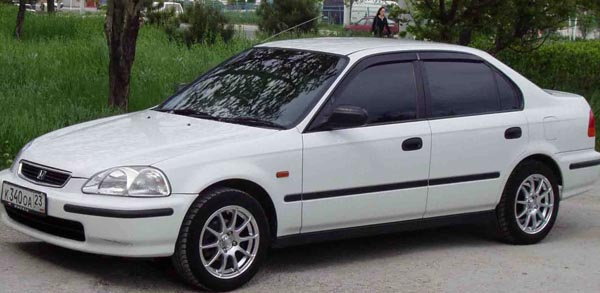
Related Articles
- How to Check Your Tire Pressure - Honda-Tech.com
- How to Check Your Tire Tread - Honda-Tech.com
Step 3 – Check the brakes
Excessive brake drag can cause your car to pull to one side, especially when you press on the brake pedal.
All of these may cause a brake drag:
- A caliper that sticks
- A piston that is frozen or stuck inside the caliper
- An overfilled fluid reservoir in the master cylinder
- Weak drum brake return springs
- Incorrectly adjusted drum brakes
- Incorrectly adjusted parking brake
- Incorrectly adjusted brake pedal
- Worn or loose control arm bushing and strut rod
To diagnose:
- Jack your car up.
- Rotate each tire by hand, and check for a drag.
- If there is a drag, systematically check each potential cause for a faulty or damaged part.

Step 4 – Check the power steering system
Check for an imbalance in the power steering system.
These may cause your car to pull to one side:
- Seal leaks in the control valve
- Off-center steering
- Improper hydraulic pressure of the boost cylinder piston
To diagnose:
- Jack up your car, and keep the engine running when you do.
- Check to see if the tires turn to one side or the other on their own.
- If they don’t, you can rule out a seal leak or off-center steering.
- If they do, this imbalance likely indicates that you need to replace the control valve assembly and/or steering gear.
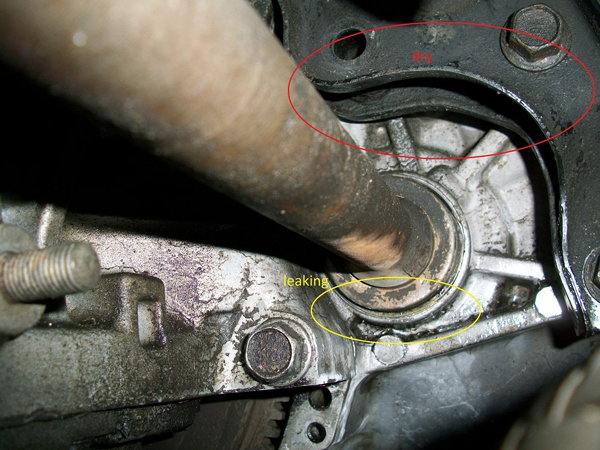
Step 5 – Check for memory steer
Cars that keep pulling to one side may have an improper balance somewhere in the front end or in the binding steering component.
Possible causes include:
- Worn binding bearings in the strut towers
- A worn spring plate
- Binding front end linkage
- Binding ball joints
- Unbalanced power steering rack
- Worn or incorrectly adjusted sector shaft in the gear box
- Lack of lubrication in pivot points
To diagnose the binding front end linkage, check for any faults on the tie rod ends, idler arm, and other linkage points for binding. If you need to replace these parts, be sure your wheels are straight, especially on the final torque. Replacing one or more of these parts while your wheels are turned can cause the tie rod to return to its turned position, which will further exacerbate the problem.
Step 6 – Other reasons
If you need to maintain pressure on your steering wheel to prevent your car from pulling to one side, then you may have:
- An uneven side-to-side camber
- A bent strut
- A misplaced strut tower
- A bent spindle
- A collapsed control arm bushing
- A weak or broken spring
- A shifted cross-member or engine cradle
For diagnosis and repair:
- Compare the steering axis inclination (SAI) to its correct specifications, and check how high your car is off of the ground.
- Replace the worn or damaged part(s).
- Correct the location of the strut tower.
- Re-position the engine cradle.
- Reduce the cross caster by resetting caster specifications.
You can find the necessary measurements in your owner's manual.
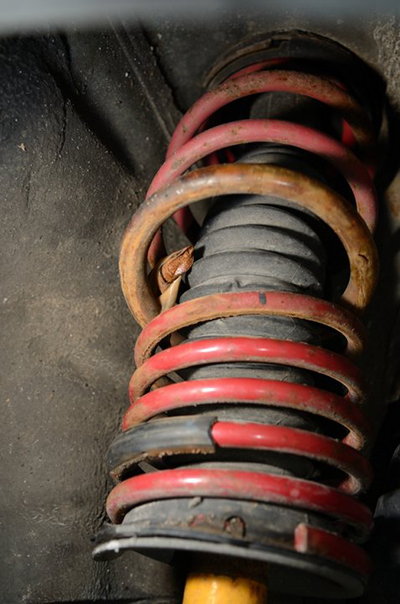
Related Discussions
- Alignment Good But Car Still Pulling - Honda-Tech.com
- Car Pulls to One Side - Honda-Tech.com
- Car Pulling Hard Left - Honda-Tech.com
- Car Pulls to the Right When Accelerating - Honda-Tech.com
- Tire Rod Causing Car to Pull to the Right? - Honda-Tech.com



